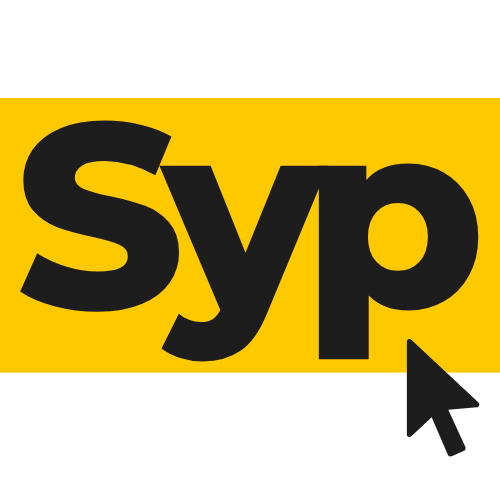Finding a job without using recruitment agencies may seem challenging, but it is definitely possible. Many people successfully secure work by using direct methods such as networking, applying to companies online, and improving their CVs. The key is to be proactive and use multiple tools to connect directly with employers.

People can start by reaching out to contacts in their industry or attending job fairs and local events. Writing tailored applications and following up on job postings also increases the chances of getting noticed. These steps give more control over the job search than relying on agencies.
Using websites like company career pages and professional social networks can open up opportunities that are not shared with agencies. By focusing on self-driven strategies, job seekers can find positions that match their skills and interests more closely.
Understanding the Job Market

Knowing what skills employers want and keeping up with industry changes helps jobseekers focus their efforts. This knowledge makes it easier to apply for jobs that match their strengths and future growth areas.
Identifying In-Demand Skills
Jobseekers should identify the skills most valued by employers in their field. These skills often include technical abilities, such as coding or data analysis, as well as soft skills like communication and teamwork.
They can find this out by looking at recent job ads and noting common requirements. Online job boards and company websites are good sources. Some sectors, like healthcare and technology, have clear demand for specific skills.
Keeping skills up to date is vital. Courses, workshops, and online learning platforms help people learn new skills that employers need now.
Researching Industry Trends
Researching trends helps jobseekers understand how industries are changing and where jobs will grow. For example, renewable energy and digital marketing are growing sectors.
Sources like trade publications, government labour reports, and industry blogs provide reliable information. They offer insights into which jobs are expanding or shrinking.
Knowing trends also guides jobseekers in choosing the right companies. Companies investing in new technologies or markets tend to create more job opportunities.
Keeping an eye on news about mergers, changes in laws, or economic shifts helps jobseekers stay informed. This information shapes where and how they search for jobs.
Building a Targeted Job Search Strategy

A focused plan helps job seekers use their time well and find the right roles. This involves understanding what kind of career they want, knowing the type of company they want to work for, and making a clear timetable for job hunting.
Setting Clear Career Goals
A job seeker should start by listing specific career goals. This means deciding what kind of job they want, the industry, and the skills they wish to use or learn. For example, rather than saying “work in marketing,” they could aim for “a digital marketing role in retail.”
Clear goals help narrow down options and make applications more precise. It also helps track progress over time. They should write these goals down and review them regularly.
If goals change, they should update the list. This keeps the job search focused and prevents wasting time on unsuitable roles.
Defining Your Ideal Employer
Knowing what makes a company a good fit is important. Factors can include company size, values, location, and work culture. For instance, some may prefer a small business with close teamwork, while others want a large company with many career paths.
Salary and benefits also play a role. A clear picture of an ideal employer guides job seekers to companies that match their needs, increasing job satisfaction later.
They can research companies online, check reviews, or ask current employees. This saves time by avoiding jobs at places that don’t suit their preferences.
Creating a Job Search Schedule
A consistent job search routine improves chances of success. Setting specific hours each day or week to find and apply for jobs avoids last-minute rushes.
Breaking tasks into steps makes it easier. For example:
| Task | Time Needed | Frequency |
|---|---|---|
| Searching job boards | 30 minutes | Daily |
| Customising CV/cover letter | 45 minutes | Per job application |
| Networking | 1 hour | Weekly |
Sticking to a schedule helps keep motivation high and prevents burnout. It also allows time for follow-ups and interviews.
Utilising Online Resources

Finding a job online means using different websites and platforms to search, connect, and apply. Knowing where and how to look helps save time and improves chances of success. It includes searching job boards, using professional networks, and exploring social media.
Navigating Job Boards and Company Websites
Job boards list thousands of current job openings. Popular sites like Indeed, Totaljobs, and Reed allow users to filter jobs by location, salary, and industry.
People should set up email alerts to get updates on new postings. Many boards also let users upload CVs for employers to find.
Checking company websites directly helps find opportunities not posted elsewhere. Large businesses usually have a dedicated “Careers” page.
Applying via company sites often speeds the process, as there is no middleman. It can also show a real interest in that employer.
Leveraging Professional Networking Platforms
LinkedIn is the main platform for professional networking. Creating a clear profile with a photo, skills, and experience is essential.
Users should connect with industry professionals and join groups related to their job field. It helps in noticing hidden job openings.
Regularly posting and commenting increases visibility. Some jobs are shared only within these networks.
Setting job preferences on LinkedIn lets the platform recommend relevant listings. Messaging recruiters directly can sometimes lead to interviews.
Using Social Media for Job Hunting
Social media sites like Twitter and Facebook are useful for job searches. Many companies post vacancies on their official pages.
Following recruitment pages and industry leaders helps spot new roles quickly. Twitter hashtags, such as #JobVacancy or #Hiring, can be searched for openings.
Groups on Facebook often focus on jobs in specific locations or sectors. Joining and participating in these groups can provide direct leads.
Social media also allows direct contact with hiring managers, which can speed up a hiring decision.
Networking and Direct Outreach

Finding a job without using recruitment agencies often relies on building relationships and contacting employers directly. This approach helps access opportunities that are not advertised publicly.
Connecting with Industry Professionals
Building connections with people in the same field can open doors to job opportunities. Professionals can share advice, information about openings, and potential referrals.
Using LinkedIn or professional groups online is a good start. Joining discussions and sharing relevant content shows interest and expertise. Attending meetups or joining associations also helps build relationships in person.
It is important to be genuine and clear when asking for help. Short messages that explain your goals and how you can contribute work best. Following up politely increases chances of a positive response.
Attending Career Events and Fairs
Career fairs and industry events provide direct access to employers and hiring managers. These events are opportunities to introduce yourself and learn about companies.
Before attending, researching which employers will be present helps you prepare specific questions. Dressing smartly and bringing updated CVs leave a good impression.
During the event, approaching stalls with confidence and listening carefully to the representatives’ advice builds rapport. Taking notes and asking for contact details allow follow-up after the event.
Reaching Out to Employers Directly
Contacting companies directly shows initiative and motivation. Sending tailored emails or letters can attract attention even if there are no advertised jobs.
The message should include a brief introduction, relevant skills or experience, and why the person wants to work for that company. Including a CV or portfolio enhances the approach.
Following up after one or two weeks is important. Persistence demonstrates genuine interest but should remain polite and professional at all times.
Enhancing Your Application Materials
Strong application materials increase the chance of getting noticed by employers. Focusing on making the CV and cover letter specific to each job and highlighting relevant skills can make a big difference.
Tailoring Your CV and Cover Letter
He should read the job description carefully before writing. A CV that matches the keywords and duties listed will stand out. It’s important to reorder work experience and skills to match the job needs.
The cover letter must be clear and direct. It should explain why he is interested in the role and how his experience fits the company’s goals. Avoid using generic phrases or repeating the CV. Personalising both documents for each application shows effort and attention to detail.
Showcasing Transferable Skills
Skills gained in one job can be useful in another, even if the roles differ. He should identify skills like communication, teamwork, or problem-solving in past jobs or activities.
Listing these transferable skills with examples helps employers see his potential. For example, managing a project in one field can show organisation skills needed in another. Using bullet points to highlight these makes it easy to read.
Following Up and Managing the Application Process
Organising job applications and preparing for interviews are key steps after applying. Keeping track of each application and responding to replies promptly helps manage the process clearly and efficiently.
Tracking Applications and Responses
He should create a simple system to log every job he applies for. This could be a spreadsheet or a notebook that records:
- Company name
- Job title
- Date of application
- Contact details
- Follow-up dates
Checking email regularly is important to catch any replies from employers. If there is no response within 7-10 days, sending a polite follow-up email can show interest without being too pushy.
Recording each follow-up and its outcome helps avoid confusion and missed opportunities.
Preparing for Interviews
Preparation starts with researching the company’s background and the job role. He should review the job description and think about how his skills match the key requirements.
Practising common interview questions aloud can improve confidence. He should prepare clear, brief examples from past experience that relate to the job skills.
Choosing appropriate clothes and planning the journey to the interview location also matters. Arriving on time shows professionalism and respect for the employer’s time.

